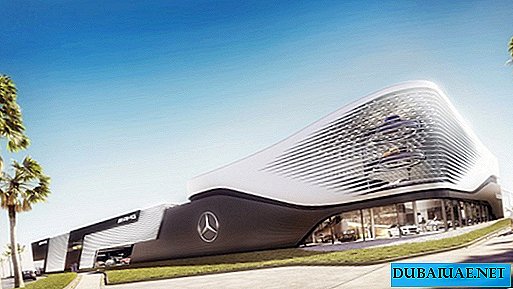If the Greeks reached the top in literature, art, philosophy and the spiritual sphere, then the Romans, more practical and rational, especially proved themselves in the administrative field and in the organization of the empire.
This difference in characters was reflected in works of art. While Greek masters tried to embody the idea of harmony and pure beauty, Roman architecture has imprints of grandeur and power, indicating a certain practicality. This is what characterizes the architecture of Ancient Rome, which will certainly captivate one who visits forums, amphitheaters, cathedrals, sees grand triumphal arches.
The foundation of Rome dates from April 21, 753 BC. The "eternal city" was first ruled by kings, then consuls during the Republic, and finally emperors. Secular power was established in the church in the Middle Ages, and Rome remained the residence of the papal court until September 20, 1870, when the Italian army entered Rome and the Eternal City became the capital of United Italy. Modern Rome is located on both banks of the Tiber River. The population of Rome is more than three and a half million people.
The Vatican is the state of the Pope of Rome, which since 1929 became known as the State of the Vatican City.
Fate and history decreed that even after the fall of the great Caesar empire, in less happy times, Rome retained its role as a teacher of civilization, the cultural and spiritual center of the world, becoming the capital of Christianity and the residence of the successor of the Apostle Peter. Thanks to the beginnings of the Papal Court, culture and art developed rapidly during the Renaissance. The most ambitious evidence of this heyday is the construction of the new St. Peter's Basilica, as well as the Vatican palaces with the masterpieces of Bramante, Raphael and Michelangelo - led by the greatest masters of all time.
Visiting Rome, getting acquainted with its sights and architectural monuments, you feel the breath of centuries-old history, the indescribable charm that permeates every stone, every monument of the Eternal City.
Acquaintance with Rome begins with the center of a religious cult from ancient times, the most famous of the Roman hills - the Capitol, which is the heart of Rome and a witness to the main events of the city's history. Once a sacred place of the Roman gods, triumphal processions of victorious generals, and today - the seat of the mayor of the city and the Roman commune.
For thousands of years, the Capitol remained the center of Roman life. The Capitol Square, its architectural ensemble owes the perfection of its harmony to Michelangelo, who designed it by order of Pope Paul III. As conceived by the great artist, the square is surrounded by three palaces - this is the Palace of the Conservatives, the Palace of Senators and the New Palace. In the center of the square stands the famous equestrian statue of Marcus Aurelius. According to historical sources, this bronze statue dates back to the 2nd century A.D. and in 1538 was moved from Laterano to Rome by Pope Paul III, contrary to Michelangelo’s design. It is believed that this equestrian statue represents the emperor Constantine.
On one of the hilltops, at the highest point of the Capitol, where Arché, or the Citadel of Rome was, is the Temple of Our Lady "Altar of Heaven" (Santa Maria in Aracoeli). The legend tells how Augustus, inspired by Sibyl's prediction of the birth of Jesus, erected an altar here in honor of the "Firstborn of God." This church studied the glory of the ancient Capitol: it became the national temple of the nobility and the Roman people, the main residence of the medieval Senate.
The Capitoline Cathedral is known for its centuries-old relics, burials, frescoes and a gilded arch, as well as its antique utensils. The figure of the Virgin and Child, located in the main altar, is interesting for its Byzantine style and is attributed, according to tradition, to the brush of St. Luke. A 124-story staircase, built in 1348, leads to the main entrance to the church as a gift from the vow of the Mother of God for saving the city from the terrible plague.
The heart of the city is Venice Square. A monument to Victor Emmanuel II, whose white silhouette is an integral part of the city panorama, solemnly rises in this square of rectangular shape. From here, the main streets of Rome diverge.
From Venice Square begins the street of the Imperial Forums (Via dei Fori Imperiali). In ancient times, the forum was a square surrounded by cathedrals, monuments, temples, which focused all city life. In 283, a fire severely destroyed the forum, which at that time had already turned into a monumental ensemble. Attempts at its restoration in the era of the emperor Diocletian could not stop his decline, which continued with the invasion of the barbarians. In the end, the forum turned into a pasture for livestock. Only since 1700, interest in this universal complex has reappeared, thanks to the numerous excavations and archaeological research that continues to this day.
A street passed through the forum, bearing the name Sacra (Sacred Road), rising to Capitol Hill. Forum stones have witnessed all hurricanes of human passions and talk about the incredible ups and downs that over the centuries have accompanied the formation and maturation of those modern conditions in which we live and breathe. They remind us of the empires that existed and died here, talk about how Rome was at different times in history. These ruins tell us about the development of art, history, religion, human society. Mentally on the wings of fantasy, we are transported to those distant times and we hear the voice of Cicero, the songs of Virgil, we leaf through the pages of creativity of the school of Libya. The soul of Rome penetrates the most hidden corners of our hearts.
At the end of the street of the Imperial Forums, between the hills of Exvillin, Palatine and Celius, stands one of the greatest wonders of Roman civilization - the Colosseum. This huge amphitheater, the impressive remains of which still allow us to imagine its former splendor, was started by Vespasianomm in 72 AD and completed by his son Titus in 80 AD Captured Jews were engaged in its construction. Its real name is “Flavius Amphitheater”, but popularly it was called “Colosseum” (Colosseum), perhaps because the Colossus of Nero was nearby.
At the end of the street of the Imperial Forums, between the hills of Exvillin, Palatine and Celius, stands one of the greatest wonders of Roman civilization - the Colosseum. This huge amphitheater, the impressive remains of which still allow us to imagine its former splendor, was started by Vespasianomm in 72 AD and completed by his son Titus in 80 AD Captured Jews were engaged in its construction. Its real name is “Flavius Amphitheater”, but popularly it was called “Colosseum” (Colosseum), perhaps because the Colossus of Nero was nearby.
The Colosseum served as a giant stadium of our era, accommodating 73 thousand spectators. In the prime of its glory, the amphitheater was a stunning witness to Roman greatness. The most beloved performances of the Romans were circus games (Ludi Circienses), which were invented in the last years of the Republic's existence in order to revive and strengthen the warlike spirit in the Romans, which made them masters of the world. These games laid the foundation for professional gladiators trained to fight and kill each other. The horror of the performance was intensified by the participation of predatory animals. Dion Cassius claimed that 9,000 wild predators were killed in 100 days of the feast dedicated to the Colosseum. After the grasses of predators, the arena was often filled with water, and naval battles were organized on it. The great emperor Constantine and his other followers tried to stop the gladiators' battles, but the Romans stubbornly did not agree to abandon the usual amusements. Once, at the beginning of the 5th century, a monk who came from the East named Telemachus entered the arena, trying to prevent the gladiators. He appealed to the audience, begging them to abandon this spectacle. Telemachus was called a "uninvited guest", a "sufferer for humanity" and stoned. But from this day the performances stopped.
After the catastrophic raids of the Normans, only a skeleton remained from classical Rome, and the Colosseum was left in desolation and for many years turned into a quarry, where material was extracted for the construction of the city. Benedict XIV, in order to save what was left, wanted to consecrate the old amphitheater, blessing Via Crucis and establishing a cross in the center. Now, after many centuries, the Colosseum is the pride of Rome and is admired by visitors.
Crossing the Tiber along the majestic St. Angel's Bridge (formerly Elijah Bridge), built by the Emperor Hadrian (130 BC) together with the Mausoleum, we see the Castle of St. Angel, where the remains of the imperial family are buried. The history of the Mausoleum of Hadrian follows the same steps as the city itself: with Rome, he sees the struggle and intrigues of the Middle Ages, the luxury of the papal court in the Renaissance, the horrors of the looting of Rome in 1527. The name of the castle of the Holy Angel dates back to the XII century and originates from an ancient legend. During the solemn procession arranged by Pope Gregory the Great in order to beg the Blessed Virgin to save from the raging plague in the city, an angel appeared in the sky and stopped at the top of the Mausoleum, sheathing the sword with a sword in granted grace. Then a chapel was built in the name of the Angel, and in the aftermath a statue of the Angel was built, as a reminder of this miracle. Since then, the fortress was renamed the Castle of the Holy Angel, so that people remember about this event.
The castle was solidly fortified and attached to the wall, forming a real protective bastion on the western bank of the Tiber River. In the event of a siege, in the Middle Ages, the inner wall of the castle was connected to the Vatican, thereby ensuring the safe evacuation of the pope from the Vatican palaces to the refuge of the castle of St. Angel. At the same time, the castle became a prison, which at different times contained such celebrities as Giordano Bruno and Count Cagliostro. Currently, the castle houses a museum.
When visiting Rome, a special impression remains from the Vatican City - the residence of the popes since 1377. Since that far, there has not been such a pope who would not have contributed to the development and decoration of the Vatican in order to make this holy hill an even more worthy place for the throne of the Supreme Father of all Catholics of the world. On the papal throne, 265 people were replaced one after another in a continuous row, many of whom were reckoned among the martyrs and saints.
In the Roman era, a magnificent circus was built on the Vatican Hill, the construction of which was begun by Caligula and completed by Nero. With this last, probably in 67 BC, St. Peter was crucified during the first persecution of Christians. His body was buried near proximity. More than 250 years later, Emperor Constantine erected a magnificent basilica over the grave, designed to become one of the wonders of the world.
In the Roman era, a magnificent circus was built on the Vatican Hill, the construction of which was begun by Caligula and completed by Nero. With this last, probably in 67 BC, St. Peter was crucified during the first persecution of Christians. His body was buried near proximity. More than 250 years later, Emperor Constantine erected a magnificent basilica over the grave, designed to become one of the wonders of the world.
Now we admire the splendor of St. Peter's Square, on which stands the most important church of the Christian world - St. Peter's Basilica, crowned by the majestic and impressive dome of the work of Michelangelo. The dome of the cathedral is a harmonious poetry of immensity. When the immortal genius of Michelangelo conceived it, he should have felt that sense of infinity and infinity, which would certainly impress the soul and feelings of everyone who saw him.
"The giant structure of the dome seems miraculously devoid of weight in some way; its powerful lines are both soft and graceful. The rarest combination of strength and grace is the result of the genius of Michelangelo, which became the symbol of Rome Christ and the popes, just as the Colosseum became the symbol of Rome Caesars" . It is difficult to imagine the Roman sky without this magnificent silhouette giving a sense of spiritual joy.
The Colonnade - the ceremonial entrance to the Cathedral of St. Peter and the Vatican, became the most famous work of the architect Bernini. Two large open wings, spreading in a semicircle, seem to be the outstretched arms of a temple ready to take all of humanity into its arms.
Holy Doors (Porta Santa) open once every 25 years, during holy years. They symbolize Christ himself, who said: “I am the door: whoever comes in by me will be saved” (John X.9). In the first chapel of the right nave on the throne is placed Pieta - the most famous sculpture of the Christian world. Michelangelo sculpted it in 1499 at the age of 24, and this is the only work he signed. The purity of the lines and expressiveness of the sculpture amazes everyone. The great master taught us here a lesson in the high spiritual vision of the human structure. The Virgin Mary is the eternally young Mother of God, holding the executed Son in her lap, full of gentleness, sad humility and, at the same time, faith in salvation. Olympic rigor envelops them, and a veil of sorrow envelops their beautiful bodies. Contemplating Pietu, we feel that the sufferings of life, great losses, heart pain can be moderate and mitigated. We are keenly aware of the high cost of our salvation.
The area of St. Peter's Basilica is 25616 square meters. It has 44 altars, 11 domes, 778 columns, 395 statues and 135 mosaics. This building is a creative act of many great masters, a grandiose manifestation of devotion to the church founded by St. Peter. She embodies the greatness, strength, glory, strength and beauty of the Lord, calling in His Temple.
The most valuable artistic, historical and religious monument of the Vatican is the Sistine Chapel, built by the architect Giovanni de Dolce on the order of Pope Sixtus IV. This is a large rectangular hall with a huge arch, richly painted with frescoes. In the Sistine Chapel even today solemn ceremonies are held and, above all, the famous conclave of cardinals, at which a new pope is chosen. The walls and ceiling of the chapel were painted almost simultaneously, and the most famous artists took part in the creation of this pearl of Renaissance art: Michelangelo, Pinturicchio, Signorelli, Botticelli, Ghirlandaio, Rosseli.
Michelangelo's unique and most modern work is the Last Judgment fresco, located in the altar wall of the Sistine Chapel. Work on it began in 1536 and was completed only five years later, when the entire chapel was painted. The painting is striking in its drama and expressiveness. The figures surrounding Christ, the stern and unyielding Judge, make a spectacular impression. At the bottom right are the sinners in Charon's boat, falling into hell, in the sky are angels whose trumpet voice calls the dead to stand up. At the feet of Christ - St. Lawrence and St. Bartholomew with a dagger in his hand, in the face of which the artist portrayed himself. Next to Christ, the humble Madonna.
Leaving the monuments of ancient Rome, it is necessary to visit Pompei (Pompei). The city was discovered in the XVIII century. History testifies that on August 24, 79, the sudden eruption of the volcano Vesuvius covered the city of Pompeii with stones and ashes, whose three thousandth population turned out to be buried alive in an instant.After the eruption, the city was hidden for a long time by more than six meters of ash, which forever captured and preserved for hundreds of years, a frozen picture of city life and life at the time of the tragedy. The largest religious building of the city is the forum, the temple of Jupiter of the 2nd century BC, surrounded by two arches of Glory. Erected on the podium, it is a brilliant example of the Italian style in architecture.
Thoroughly touching the masterpieces of world history, culture and art, you rethink everything that happens in the real world, the creator and creator of which is the highest mind on Earth - man. Acquiring new powers and drawing energy from the greatness and grandeur of the history of ancient monuments, I want to strive for all that is bright, beautiful, to create and create in harmony with the huge world of being presented to us - humanity, so amazing, immense, bright and beautiful.
/ Tatyana Peschanskaya /










